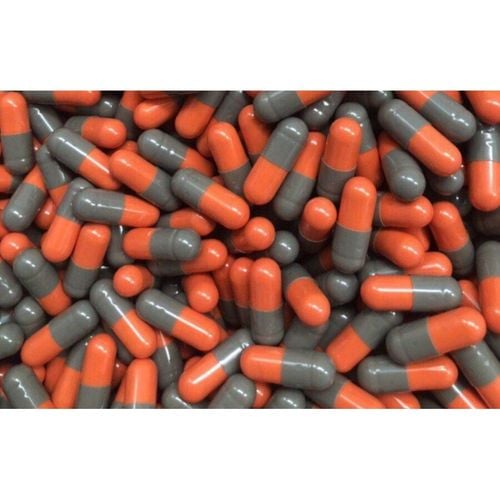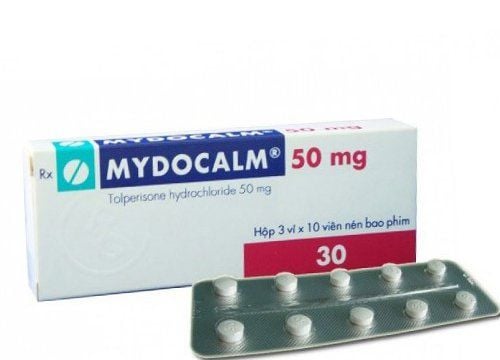This is an automatically translated article.
Maxcino is known to be a popular and effective drug in the treatment of spasticity caused by spinal cord injury or multiple sclerosis. However, besides the use of the drug, patients should also pay attention to other unwanted reactions.
1. Uses of the drug Maxcino
Maxcino's main ingredient is Baclofen, which belongs to the group of muscle relaxants and increases muscle tone, prescribed by doctors in the treatment of spasms caused by multiple sclerosis; spinal cord injury, including myeloma, spinal cord hollow, motor neuron disease, transverse myelitis; paralysis due to brain damage; meningitis ; cerebrovascular stroke; head injury. Baclofen is mainly used to treat spastic movement disorders, especially in cases of spinal cord injury, cerebral palsy and multiple sclerosis.
The drug is also used to improve muscle function and relieve pain.
Mechanism of action:
Baclofen has the ability to block nerves in the formation of the brain's reticular organization, these nerves control muscles and act on spinal nerves, reducing the number of number and severity of contractions. It also relieves pain and improves muscle movement.
2. Dosage and how to use Maxcino
How to use: The drug is produced in the form of film-coated tablets and used orally, the patient should take the drug 3 times a day.
Dosage:
Dosage for adults: During the first 3 days of treatment, the dose is 5mg x 3 times/day, the next 3 days take 10mg x 3 times/day, after 3 days use 15mg x 3 times /day, then increase the dose to 20mg x 3 times/day. Maximum dose is 100mg/day. For children under 12 months, the dose is from 0.75 to 2mg/kg/day. For children from 12 months to 2 years old, the dose is 10 - 20mg/day. For children from 2 to 6 years old, the dose is 20 - 30mg/day. For children 6 - 10 years old, the dose is 30 - 60 mg/day. For children over 10 years old, maximum 2.5mg/kg/day. Contraindications:
Do not use for patients who are allergic or sensitive to Baclofen or Maxcino. Do not use Maxcino with patients with stomach ulcers. Overdose and treatment:
Baclofen overdose can cause symptoms including vomiting, weakness, respiratory depression, convulsions, abnormal pupil size, dizziness, headache, pruritus, hypothermia, bradycardia, increased blood pressure, decreased reading and coma. Treatment: Treat according to the symptoms of the disease
3. Maxcino drug side effects
Some side effects that patients may experience when using Maxcino such as:
Common side effects: Constipation, dizziness, fainting or dizziness when standing up suddenly from a lying or sitting position, sadness vomiting, frequent urination, trouble sleeping, sweating, fatigue
Uncommon side effects: Bloody or dark urine, chest tightness, tremors, problems with muscle control, fainting, mental weakness, arrhythmia, ringing in the ears, skin rash or itching, swollen ankles, muscle stiffness.
Rare reactions: Diarrhea, loss of appetite, muscle or joint pain, numbness or tingling in hands or feet, nasal congestion, weight gain.
Serious reactions: Hallucinations, hearing loss, confusion and excitability, delirium, insomnia, dizziness, memory impairment, perceptual disturbances, itching, anxiety, depression, hyperthermia, hyperthermia (higher than normal temperature without infection), formal thinking disorder, mental confusion, mood disturbance, restlessness and disturbance of behavior, tachycardia, convulsions, tremors, autonomic dysfunction.
4. Be careful when using Maxcino
Patients absolutely do not use expired medicine or medicine with signs of damage such as color change, mold, watery. Care should be taken when using the drug for patients with kidney failure, liver failure; mentally ill, convulsive or mentally impaired. For pregnant women: There is not enough data to prove that Maxcino is safe for pregnant women, so before using the drug for treatment, patients should consult a doctor and weigh the benefits and harms. provided by the drug. For women who are breast-feeding: It is not confirmed whether the drug can be excreted in breast milk or not, and should be used with caution in this case. Use with caution in patients taking antihypertensive and anticonvulsant drugs.
5. Drug interactions
Drug interaction is the process of mutual interaction between Maxcino with other drugs, or possibly with some foods that the patient uses during treatment. The interaction makes the drug increase or decrease the therapeutic effect, increase the unwanted side effects and affect the patient's health. The following are drugs that, when taken with Maxcino, may cause drug interactions that patients should be aware of:
Abacavir: Baclofen may decrease the rate of excretion of Abacavir, resulting in higher serum drug concentrations. 1,2-Benzodiazepine: Baclofen may increase the CNS depressant (CNS depressant) activities of 1,2-Benzodiazepine. Acarbose: The therapeutic efficacy of Acarbose may be reduced when used in combination with Baclofen. Acebutolol: The risk or severity of side effects may be increased when Baclofen is combined with Acebutolol. Aceclofenac, Acemetacin: Drugs may decrease the rate of excretion of Baclofen, resulting in higher serum concentrations. Acetazolamide: Baclofen may increase the CNS depressant (CNS depressant) activities of Acetazolamide. Acipimox: The risk or severity of myopathy, rhabdomyolysis, and myoglobinuria may be increased when Baclofen is combined with Acipimox. Albiglutide: The therapeutic efficacy of Albiglutide may be reduced when used in combination with Baclofen. Alendronic Acid: The risk or severity of myopathy, rhabdomyolysis, and myoglobinuria may be increased when Baclofen is combined with Alendronic acid. Alogliptin: The therapeutic efficacy of Alogliptin may be reduced when used in combination with Baclofen. Amiodarone: The risk or severity of myopathy, rhabdomyolysis, and myoglobinuria may be increased when Baclofen is combined with Amiodarone. The basic information about Maxcino in the above article is for reference only. Because this is a prescription drug, patients should not arbitrarily use Maxcino, but need to contact a specialist doctor directly for a suitable prescription, ensuring safety for health.













